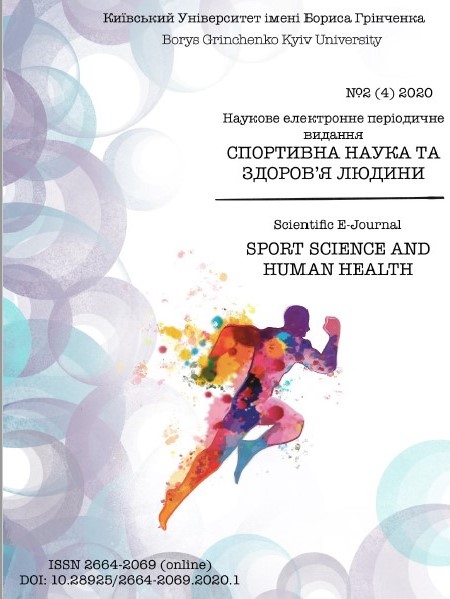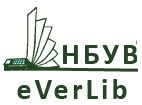INTERNATIONAL FEDERATION OF PHYSICAL EDUCATION AND ITS IMPACT TO MONITORING OF QUALITY PHYSICAL EDUCATION IN THE WORLD
DOI:
https://doi.org/10.28925/2664-2069.2020.2.1Ключові слова:
FIEP, physical education, monitoring, QPEАнотація
Introduction. Physical activity is already well established in all Member States of the EU in the form of physical education as well as various programmes to enable young people to be physically active before, during and after the school day. Nevertheless, active school breaks and inclusion of physical activity into school lessons could be extended at national level. The number of hours of physical education is often defined subnationally and in some instances by schools. Increasing the number of mandatory hours and setting standards to ensure quality could further help students to reach the WHO recommendations and ensure the potential of schools for promoting physical activity among young people.
The study aimed to find out the best practices of the International Federation of Physical Education to monitoring of quality physical education.
Material and methods: theoretical analysis and generalization of literary sources.
Results. Physical activity of youth can be increased in several ways. The most broadly used practice is physical education, which is part of the school curriculum in all EU Member States; however, the number of hours of physical education provided, whether compulsory or optional, and the quality vary widely among countries. In order to provide good-quality, regular physical education and promote safe physical activity to all young people in schools, physical education teachers must be adequately trained in promoting health-enhancing physical activity, in addition to traditional sports.
Conclusions. It needs to be viewed in the context of inter-related strategies to embrace the formulation and development of inclusive and equitable curricula, which provide personally meaningful and socially and culturally relevant experiences and which attract young people to the joy and pleasure of physical activity so as to foster an active healthy lifestyle over the full life-span. Quality physical education curricula need to be based on the vision that the knowledge, skills and understanding acquired facilitate attainment of physical literacy and be part of a well-structured physical education programme spanning from early childhood education to the upper secondary level.
Посилання
Association for Physical Education. Health Position Paper. Worcester, 2008.
Envisioning Education in the Post-2015 Development Agenda. Executive Summary. Global Thematic Consultation on Education in the Post2015 Development Agenda. UNESCO, UNICEF, 2013 (Accessed 1/09/2020).
Global recommendations on physical activity for health. Geneva: World Health Organization; 2010:60 (Accessed 2/09/2020).
Hallal PC, Andersen LB, Bull FC. Global physical activity levels: surveillance progress, pitfalls and prospects. The Lancet, 2012; 380(9838):247-57. (Accessed 4/09/2020).
Janssen I, LeBlanc A. Systematic review of the health benefits of physical activity and fitness in school-aged children and youth. Int J Behav Nutr Phys Act. 2010;7(1):40.
Hardman K, Green K. Contemporary Issues in Physical Education: International Perspectives. Meyer & Meyer Verlag, 2011. 287 p.
Harris J, Cale L, Musson H. The predicament of primary physical education: a consequence of ‘insufficient’ ITT and ‘ineffective’ CPD? Physical Education and Sport Pedagogy, 2012; 17:367-381.
International Federation of Physical Education, Fitness and Sports Science Association, Reg. No.594. Available from: http://www.ifpefssa.org/
Leatherdale S, Manske S, Faulkner G, Arbour K, Bredin C. A multi-level examination of school programs, policies and resources associated with physical activity among elementary school youth in the PLAY-ON study. The International Journal of Behavioral Nutrition and Physical Activity, 2010; 7(1):6. (Accessed 20/08/2020).
Olympic Charter. Lausanne, IOC. 2013 (Accessed 2/09/2020).
Quality Physical Education (QPE): guidelines for policy-makers. UNESCO: 2015. 88 p. Available from: https://en.unesco.org/inclusivepolicylab/sites/default/ files/learning/document/ 2017/1/231101e.pdf
Sustainable Development Starts and Ends With Safe, Healthy and Well-educated Children. UNICEF, 2013 (Accessed 1/09/2020).
The seven domains of learning necessary for students in the 21st century are: Physical well-being, social and emotional, culture and the arts, literacy and communication, learning approaches and cognition, numeracy and mathematics, and science and technology LMTF, 2013.
Toward Universal Learning: A Global Framework for Measuring Learning. Report No. 2 of the Learning Metrics Task Force. Montreal and Washington, UNESCO Institute for Statistics and Center for Universal Education at the Brookings Institution. Learning Metrics Task Force, 2013 (Accessed 1/09/2020).
##submission.downloads##
Опубліковано
Як цитувати
Номер
Розділ
Ліцензія
Авторське право (c) 2021 Спортивна наука та здоров'я людини

Ця робота ліцензується відповідно до Creative Commons Attribution-NonCommercial-NoDerivatives 4.0 International License.











